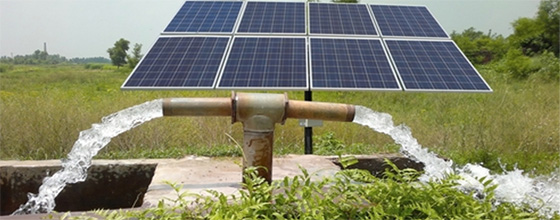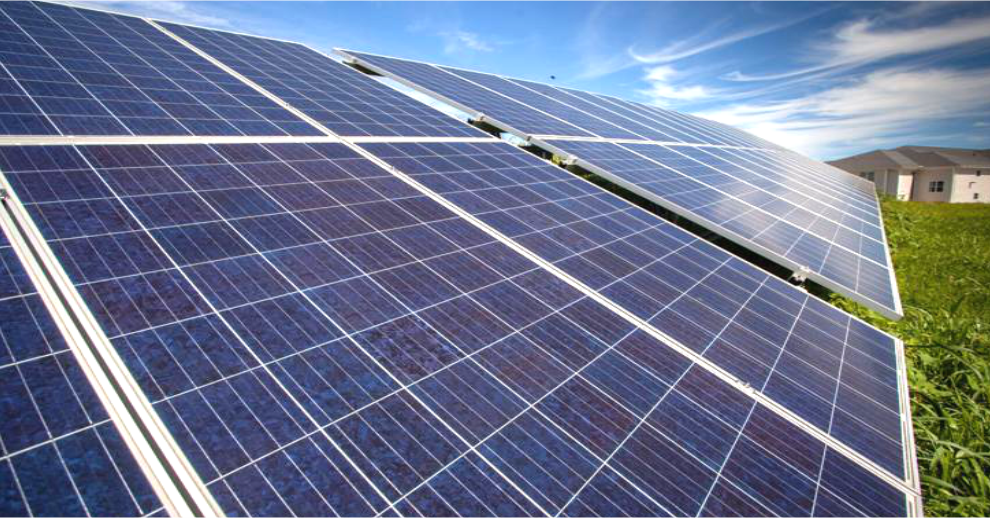The Indian sub-continent, being situated near the equator receives abundant solar irradiation for 200 days in a year. This is a luxury that most countries enjoy for far lesser days. Despite, the abundantly available sunshine and adequate resources, India has been unable to tap into this for a very long time. Looking into the power deficit of conventionally produced electricity when compared to the demand, the governments have tried to device policies and subsidies to optimize the utilization of renewable energy resources like solar and wind.
Today, India is actively competing towards becoming the premier renewable energy producer in the world. Currently renewable energy contribute around 10% of the total installed power capacity in India. While India battles will world to migrate faster to renewable energy resources, there remain many opportunities and challenges on this path.

While the overall renewable energy sector is growing there are specific challenges that are faced by the solar industry namely:
Manufacturing Cost
The solar technology is constantly chasing higher cell efficiencies and cell technology. As a result of constant technology upgradation, manufacturing units need to go for constant process upgrades, many times which are costly. These costs are directly transferred to the consumers, sometimes making solar a costly switch, when compared to conventional sources of energy.
Also as most of the technology is centered in China, manufacturers remain ahead of the curve, making it even more difficult for local manufacturers to absorb costs and reduce material prices for the local markets.
Solar Power Efficiency & Reliability
Even with the recent technological advances, solar power has scope for improvement. Technology experts are in a constant pursuit of achieving higher efficiencies while reducing the costs. A higher efficiency transpires into cost savings in other resources required to setup a solar plant. While improving the solar cell efficiency is a challenge, it also offers a significant opportunity.
Another concern hindering the adoption of solar energy is the varying intensities. Varying intensities means solar irradiation is much more effective in some regions as compared to others.Due to variability of solar energy the average cost of solar may not be worthwhile and practical in some regions. Similarly solar power is only available during the day time. Even though energy storage systems can be used to store solar energy for use later, the cost of establishing and maintaining a energy storage system is very high.
Land Availability
Though rooftop solar and micro-grids have picked up immensely in the last few years, large ground mounted solar projects still remain the driving force of the governments focus for renewable energy. For a technology like solar, availability of land for setting up multi-MW solar parks is the biggest challenge. Solar parks require huge amount of contiguous land to set up. This a challenging in a country like India, considering the ownership issues and local polity.
Financing
One of the benefits of solar energy its ease of last mile integration. Unlike other renewable energy technologies, solar systems can be established on small scale basis to fulfill the requirements of a small household, factory or commercial complex. Solar pumping solutions have seen widespread adoption in rural India, many parts of which until now were not connected to the electricity grid and were dependent of rainfall and traditional techniques for irrigation.
However, solar is a costly technology and requires adequate financing mechanisms to generate cash flows that can make it lucrative and promote faster adoption. The governments have tried to provide subsidies and soft loans via the existing banking systems to allow small households and farmers to adopt solar energy. Initially, taxation benefits were also transferred to commercial and industrial players to migrate to solar energy. In addition, net-metering and gross-metering mechanisms have been implemented to quicken the returns.
Waste Management
While India has set ambitious targets for solar energy adoption, it still lag behind in having a concrete policy for managing waste resulting from manufacturing processes and due premature failure of solar panels, before the end of life. Although the estimated life of solar panels is 20-25 years, they are often disposed of well before, because of damages during installations, handling, poor maintenance and harsh weathers. Considering the current pace of installations, India may face a waste management crisis, requiring management of 200,000 tonnes a year by 2030. These are huge numbers and can potential derail India’s push for sustainable energy transition.
Glaring opportunities for the solar industry
- Indian electricity demand is expected to increase to 15000 TWh by the year 2040. Owing to the limitations of coal-based and gas-based power plants, a chunk of the generation is expected to be met by alternative sources like solar.
- Increasing energy needs, decreasing costs and government subsidies are boosting the demand for solar energy. Solar energy has transformed into a high return investment leading to widespread adoption. The market share for solar power is expected to increase at a CAGR of approximately 35% from 2021 to 2026.
- A key driver of the solar industry is the increased investor interest in renewable energy. Changes in the global energy mix is attracting sizeable investments in solar industry. By 2028, India is expected to attract investment to the tune of approximately USD 500 billion, giving a much needed boost to the solar industry.

- Governments are constantly revamping policies to encourage the industry. Increased government support and improved economies of scale will push for the achievement of the targets of 500GW by the year 2030.
Conclusion:
The solar industry has shown robust growth in recent years. To maintain the momentum of growth, challenges have to be identified and corrective actions need to be taken. The market condition and geopolitical affairs will also affect the progress and industry growth. Overall, technology upgradation, financing and futuristic government policy framework will be the major growth drivers for the industry.
About LUBI Electronics
LUBI Electronics is a leading company in India, exhibiting expertise in the automation, solar, and control panel industry.
Our solar offerings include best-in-class solar modules, solar pumps, solar pump controllers and solar inverters.
For more information on our offerings, please reach out to us at lubi@lubielectronics.com.












